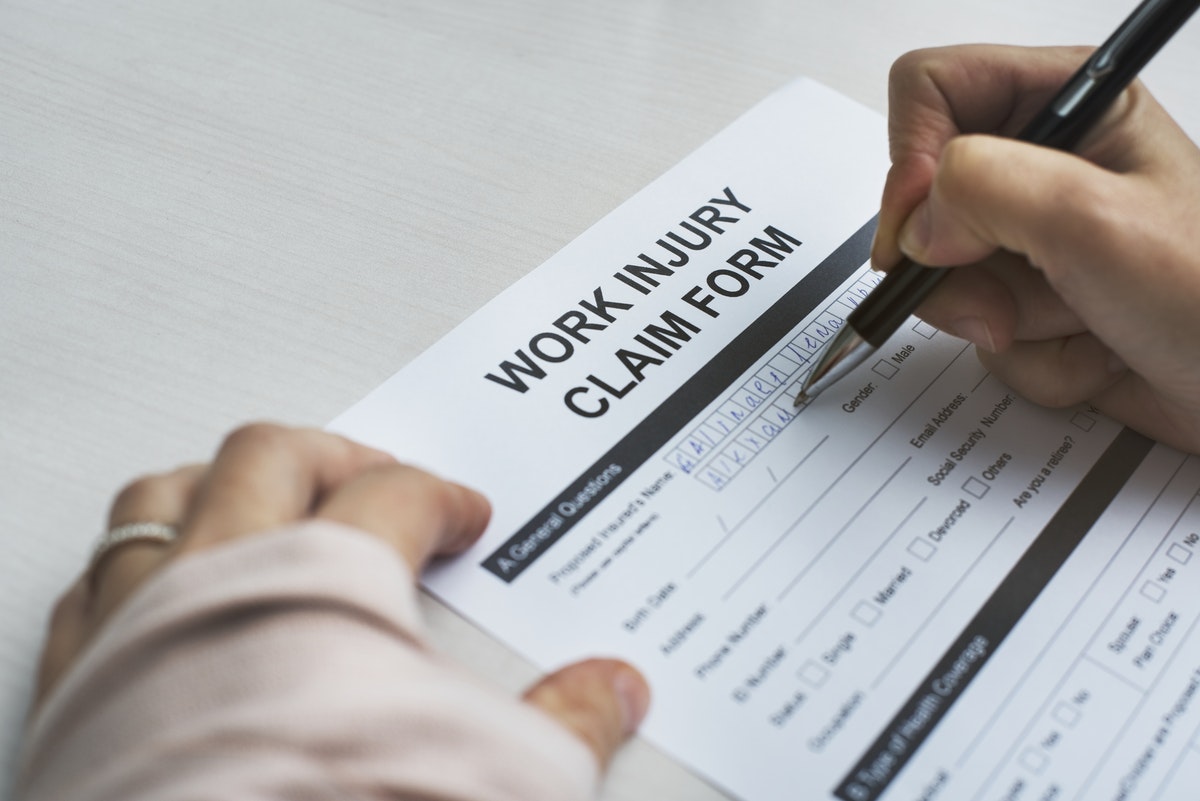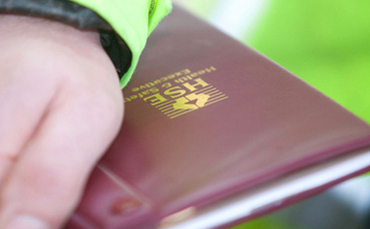BLOG
How to strengthen your health and safety claims defensibility

Coronavirus has dominated the health and safety agenda since March 2020. However, while COVID-19 risk management continues, employers must not neglect the more traditional health and safety responsibilities, namely preventing accidents in the workplace.
While this responsibility never went away, accident reduction efforts may have taken a back seat of late. It’s likely, therefore, that things may have been missed, making you more exposed to civil claims and regulatory enforcement.
As a former HSE inspector, I have investigated many accidents in the workplace and where necessary taken appropriate enforcement action. I have also seen things from the other side of the fence having worked for a national legal practice supporting lawyers and their clients who had fallen foul of health and safety law and were being investigated by the regulator. Now, of course, I work for Ellis Whittam, where our job is to help employers avoid the civil and criminal repercussions of non-compliance.
While my experience therefore extends towards investigations that follow the criminal route, I also have a good appreciation of the civil process. Indeed, in many ways, the two are very much intertwined in that both can be avoided by applying the principles of good risk management.
So, with this in mind, how can employers satisfy the regulator and, at the same time, strengthen their civil claims defensibility?
First, it’s important to understand employers’ legal duties and the difference between civil and criminal law.
All employers have a common law duty of care to provide a safe place of work, safe equipment, safe systems of work and reasonably competent employees. If you don’t, you are at risk of being negligent.
Common law is what gives rise to civil claims – employees taking their employers to court because they have suffered an injury at work as a result of their employer’s negligence.
Prior to 2013, a breach of a statutory duty under one of the regulations gave rise to civil liability. However, as a result of Section 69 of the Enterprise and Regulatory Reform Act 2013 (ERRA), the existence of a breach of a regulation is no longer enough to establish civil liability.
In addition, employers have a statutory duty under health and safety legislation, namely the Health and Safety at Work etc Act 1974, “to ensure, so far as is reasonably practicable, the health, safety and welfare at work of all his employees.”
Crucially, unlike most other forms of criminal law, health and safety law works on the principle of ‘guilty until proven innocent’. In other words, the onus is on the defendant company to convince a court that it took all “reasonably practicable” steps to manage “reasonably foreseeable” risks, rather than on the prosecution to prove its guilt.
Both criminal and civil law apply to workplace health and safety. Whilst ‘claims defensibility’ is directed towards employee compensation claims, the same robust approach will also help any dealing with regulators following a more serious incident or near-miss event.
Related Content

blog
HSE Injury and Ill Health Statistics 2020 | Some Improvements but Challenges Remain
Do you need support?
Speak to us for an honest, no obligation chat on:
0345 226 8393 Lines are open 9am – 5pm
So why do things go wrong?
In order to strengthen your claims defensibility, it’s important to understand where employers go wrong. In my experience, there are a number of common mistakes and oversights that contribute to an accident and weaken an employer’s claims defensibility.
Perhaps the most obvious and most fundamental error is risk assessment failings. All too often, risk assessments simply don’t exist or, if they do, they are unsuitable or insufficient. By this I mean they are too general or vague, don’t address all the risks, don’t follow the hierarchy of controls, or don’t evidence the control measures that have been implemented.
Health and safety law is underpinned by the requirement to do a risk assessment, and whilst it is not specifically mentioned in the Health and Safety at Work Act, devising a safe system of work is. I would defy anybody to construct a suitable and sufficient safe system of work without first contemplating any foreseeable risk. A risk assessment is therefore essential.
For this reason, risk assessments are normally the first thing demanded by a regulator during an inspection – and if you can’t produce one, or it is lacking in some way, you are setting yourself up to fail. Even if you do have one, have the findings been relayed to those who stand to be affected? Has it been reviewed and updated recently? Can the author’s competence be challenged? If there is an accident in your workplace, an inspector will make lots of enquiries in regard to risk assessments and these are all critical mistakes I often see.
Crucially, make sure you act on the findings. In my experience, it is a bigger aggravating factor to do a risk assessment and forget about it than to not do one at all (though of course, both are offences).

- A lack of information, instruction and training (or an inability to prove this has been provided). A sign-off sheet won’t always cut it – you need something to demonstrate that the message was clearly understood, such as a test.
- Inspection and maintenance failings or inadequacies. Common errors include defects being missed, checks being undertaken sporadically rather than at defined intervals, and a failure to recheck the environment or equipment when conditions change. Sometimes checks can become a ‘box-ticking’ exercise rather than being given the attention they deserve – a regulator will inevitably pick up on this.
- Overlooking occupational ill health, despite the fact that it accounts for more working days lost than traditional injuries. This often manifests as no health surveillance, no COSHH assessments, etc. (or an inability to evidence that this has been done).
- An overreliance on PPE, despite this sitting at the bottom of the hierarchy of controls. Other PPE mistakes include providing PPE that is unsuitable for the task, a lack of training, a failure to maintain it and monitor/review its use, or simply not providing it in the first place.
All of these things may support an employee’s injury claim or interest the regulator to the extent that there might be some breaches of legislation.
But how exactly do these shortcomings turn into claims?
Speaking to Simon Broome, Risk Manager at our partners Towergate Insurance, there are a number of ways that poor risk management can provoke personal injury claims.
In his experience, one of the primary reasons why accidents and incidents turn into claims is a lack of formal documentation. This typically includes training documentation, induction documentation, risk assessments, safe systems of work, PPE registers and/or isolation procedures that are either not available, not signed off, not communicated or aren’t fit for purpose. Without this evidence, defending a claim will be an uphill battle.
A lot also comes down to culture. For example, if your management team are apathetic towards health and safety or supervisors tend to play the blame game, then accidents may go unrecorded and risks will go unmanaged. Not only will this pave the way for future incidents, but a perception that leaders don’t care about employees’ wellbeing will arguably make it more likely that they will pursue making a claim.
Crucially, as word spreads that others within the business have succeeded with a claim, a ‘compensation culture’ may develop and unmeritorious claims are brought. Employers must bring this under control quickly by ensuring robust systems and procedures are in place.
Finally, a poor health and safety culture and the perception that accidents are no big deal may also lead to another, fundamental failing: the lack of a formal investigation. Don’t forget, minor injuries or incidents can be the precursor to serious events if root causes aren’t identified and remedied, so it’s important not to miss these opportunities by investigating properly, not least to show employees that you are taking them seriously.
Even if an investigation is conducted, missing or vague information, CCTV not being captured or retained, and/or no action being taken afterwards will severely compromise the aim of the exercise, which is of course to prevent further incidents and protect your claims defensibility should they occur.
Safety Culture Survey
Created by our team of highly-qualified consultants, our Health & Safety Climate Survey is an online tool designed to uncover employees’ attitudes and perceptions to workplace health and safety and provide you with an objective measure of your health and safety culture
In that case, what makes a good investigation?
There are a number of components to a good investigation, but some of the key elements include:
- Having a formalised procedure in place to make sure accidents and incidents are being investigated correctly
- Investigating as soon as possible to maximise the accuracy of people’s recollection and prevent important details being missed
- Making sure that RIDDOR notifications are made within the required timescales and contain all the correct information (or notifying the HSE directly in the case of more serious incidents)
- Refraining from making assumptions – instead, stick to the facts and always separate fact from opinion
- Refraining from making guesses – instead, be as specific as possible about the details and take accurate measurements
- Making a sketch of the incident, including the direction of travel, as well as taking photographs and obtaining CCTV footage at the earliest possible opportunity
- Conducting investigations in a formal but friendly manner – avoid being accusational or apportioning blame
- Where possible, interviewing witnesses separately to elicit more honest, independent, reliable accounts
- Taking detailed notes and making sure to sign and date all documents
- Retaining copies of relevant task-specific documents and filing these together, in a logical order, so that you are well-prepared in the event of a claim.
Though not an exhaustive list, these steps will give you the best possible chance of defending employee claims.
GFM Ltd
Ellis Whittam client
Start strengthening your claims defensibility now
Many of the things mentioned in this article are things we at Ellis Whittam help our clients with on a daily basis.
Acting as one of your legally-required competent persons, we can support your compliance by providing you with robust policies and procedures, assisting with workplace inspections and audits, helping to ensure your risk assessments fit for purpose, offering advice and guidance in emergencies, and much more.
Our award-winning software is designed to help you top of your responsibilities, demonstrate your compliance to a regulator and develop your claims defensibility records, as well as alert you to risks. And with our cloud-based e-Learning platform, you can not only ensure staff are trained in essential health and safety topics but maintain all-important training records – a particularly prominent aspect of claims defensibility when it comes to demonstrating a narrative to insurers.
The best part? It’s all included as part of our unlimited, fixed-fee Health & Safety service.
If you are concerned about the consequences of a serious safety incident and would like to know more about our dedicated, high-quality consultant support, call us on 0345 226 8393 or request your free consultation using the button below.
Sign up for the latest news & insights
Resources
Latest News & Insights

Work from wherever? | Things to consider before allowing employees to work from abroad
BLOG Written by Alexandra Farmer on 25 May 2022 A few years ago, the idea of working from anywhere in the world seemed like a pipe dream.

Reduced workforce? Here’s 5 health and safety areas you need to revisit
BLOG Written by Charles Spencer on 18 May 2022 In 2022, a growing number of businesses have moved, or are in the process of moving,

Fee for Intervention | Why health and safety breaches could cost your business more in 2022
BLOG Written on 16 May 2022 It’s a well-known fact that poor health and safety practices cost businesses money. And with the HSE recently announcing yet another

Remote work isolation | How employers can help combat loneliness
BLOG Written on 12 February 2021 While the benefits of remote work are seemingly boundless, often overlooked is the isolation and disconnectedness that it can

Time off for getting married or moving house
BLOG Written on 12 May 2022 There are certain big life events that can sometimes get in the way of work. Whether it’s a wedding

Recent cases highlight continued work at height failings
BLOG Written on 6 May 2022 Working at height continues to be the leading cause of work-related fatality. According to most recent HSE figures, these

Managing organisational change | How to keep people happy
BLOG Written on 28 February 2022 In the direst of circumstances, humanity’s true capacity for adaptation and perseverance can be realised. Where the business world

5 ways to combat 2022’s recruitment challenges when you can’t pay more
BLOG Written by Christian Vincent and Hannah Copeland on 15 April 2022 In 2022, recruitment and retention are fast becoming employers’ biggest challenges. With people

A war of words | Managing employees’ political views on the Russia-Ukraine conflict
BLOG Written by Lesley Rennie on 13 April 2022 The war in Ukraine, and the daily news reports of fatalities, continues to spark conversation in





